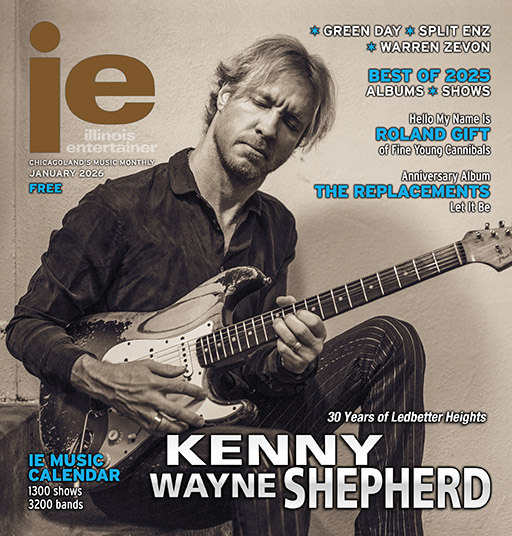Robert Randolph interview
Robert Randolph
The Next One

Lap steel guitar prodigy inspiration and advice by listening to classic Eric Clapton, Santana, and Aerosmith albums, but he learned the ropes first-hand from those illustrious artists. In the three short years since the release of his official Warner Bros. debut with The Family Band, the seasoned player has toured non-stop with the aforementioned, scored additional opening slots with Dave Matthews Band and The Black Crowes, plus become pals with producers Daniel Lanois and Rick Rubin.
“It’s funny man, I don’t know how it happened,” says a jovial Randolph, phoning in from a West Coast tour-bus ride. “I’m blessed with getting to hang out with those guys and I guess they take to me because I have something they find interesting. Guys like Eric Clapton and Carlos Santana have heard every guitar sound kind of up until now, but they find what we’re doing something new to talk about.”
After just a few moments speaking with the touring titan, it’s evident he leans much more towards the humble side than he does a celebrity name dropper and seems genuinely surprised by the reaction to his exceptional playing thus far. Anyone who has seen the feverish finger picker can attest to his lightning speed, signature style, and sophisticated amalgamation of funk, soul, blues, gospel, and good old-fashioned rock ‘n’ roll. Though all of those qualities were present on 2003’s Unclassified, they’ve reached even higer degrees come the new Colorblind, which builds upon the band’s continued tightening on tour.
“All the artists I’ve toured with have helped us get to this next level, and while people can always have fond memories of a live show, a studio record lives on forever,” Randolph relates, citing his group’s tendency to jam like they would in concert on the last record, rather than concentrating on songcraft. “We learned a lot from Santana when it came to that and he told us to take our time in the studio, really concentrate on the songwriting process, and make the best quality project we can make.”
The results are obvious throughout the album’s 11 tracks, which Randolph says will resonate with fans of Sly & The Family Stone, Jimi Hendrix, Stevie Wonder, and even Led Zeppelin. Though it sounds like a far-reaching swath of influences that’s awfully hard to live up to, the troupe delivers flourishes of each while reeling in previous sonic rambling for a more accessible offering.
“I really got a sense of soul from church and the history of our church using guitars,” explains Randolph of his rearing at House Of God in Orange, New Jersey. “We never had organs so basically that led us to exploring the gospel and soul sides of Al Green and Aretha Franklin. Funk crept in mainly from James Brown and Sly Stone and there are parts on the record that you can link back to growing up in the African-American church and the new choirs like Kirk Franklin. The songs kind of all mesh that together and a lot of people find it intriguing.”
Tracks like “Diane” and “Love Is The Only Way” (featuring Dave Matthews and Leroi Moore) are two examples of the disc’s celebratory-romantic feel, while “Blessed” and a cover of “Jesus Is Just Alright” with Eric Clapton demonstrate Randolph & The Family Band’s spiritual roots. “Stronger” is an anthem of empowerment featuring soulful duet partner Leela James and is the project’s best example of blending blues with old school R&B. And then there’s the title track and overall Colorblind theme, which as it implies, seeks to unite listeners of all creeds and break down walls of prejudice.
“[The album title] stems from how it used to be during the early days of The Beatles, Aretha, James, and Al Green when their music was heard by everybody,” Randolph rationalizes. “Today we’re in a world where music is put with labels and people say ‘This music is for you.’ You see hip-hop people writing music for people in the streets and rock people writing for California or Chicago. We want to bring everyone in and close their eyes because music is a color-blind experience.”
The outcome of this decree, along with past touring partners and faith practices, has reeled in all shades of the audience rainbow. Road time with Clapton has bred a classic rock base, Santana dates have introduced a Latin-flavored following, while DMB and the Black Crowes shows have expanded hippie interest. And of course there’s the church folk who first heard of Randolph in spiritual circles who simply can’t resist his Holy Ghost-inspired grooves.
“It’s funny how we first started at church and then as a bar band [in Jersey], but it grew nationally,” offers a still reeling Randolph. “Our crowds literally have a bit of everybody from 12 through 65 or 70. There’s black people, white people, college kids, sheer music lovers, and literally everyone. We’re not pinpointing any genre and we’re at our best live.”
— Andy Argyrakis
For more on Randolph’s meteoric rise, find the December issue of Illinois Entertainer, available throughout Chicagoland.











